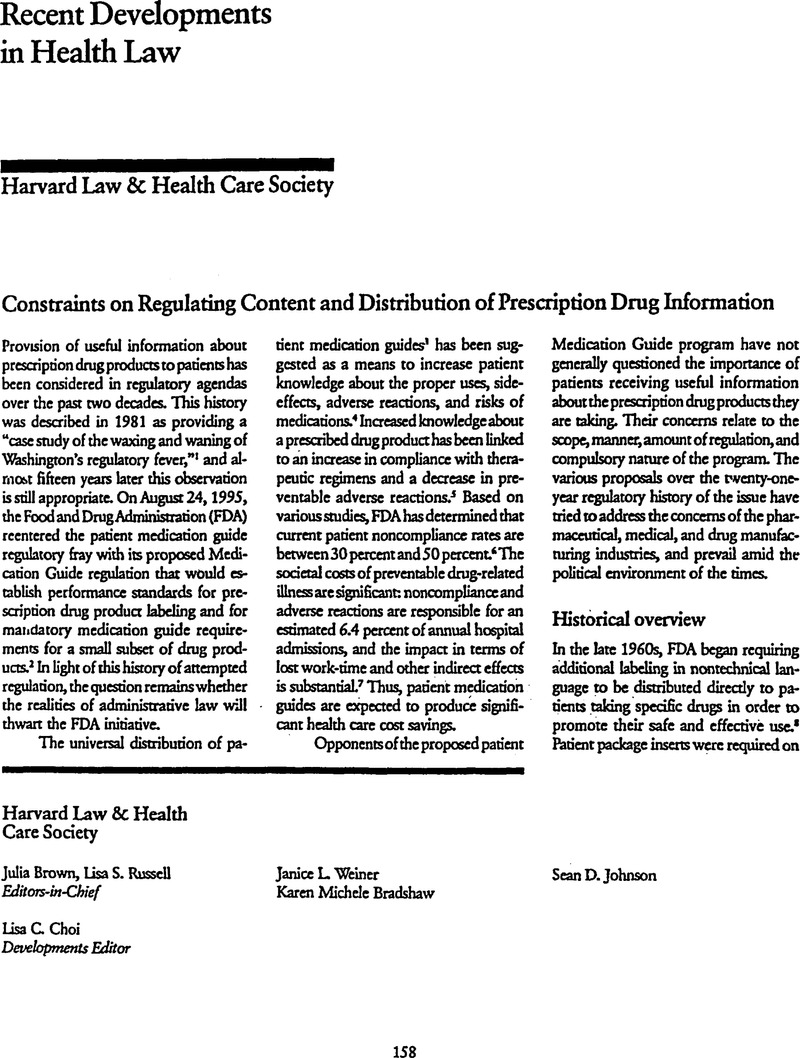These criteria asked whether the patient labeling would: (1) “affect the patient's decision to use the drug product“; (2) “help prevent serious adverse effects“; (3) “help increase the patient's adherence to the prescribed course of therapy“; and (4) identify an unsafe or ineffective indication that is not included in the drug product's labeling. 44 Fed. Reg. 40,016, 40,031 (1979). Also considered was the belief that patient labeling would “significantly enhance … safe and effective use” of drug products. 45 Fed. Reg. 60,754, 60,758 (1980). Based on these considerations, PPIs were required for the following ten drug products or classes: Ampicillins, benzodiazepines, cimetidine, clofibrate, digoxin, methoxsalen, propoxyphene, phenytoin, thiazides, and warfarin. 45 Fed. Reg. 60,754, 60,754 (1980). On December 5, 1980, bendectin took the place of warfarin on the list of drug products requiring PPIs. 45 Fed. Reg. 80,740, 80,740 (
1980).
Google Scholar